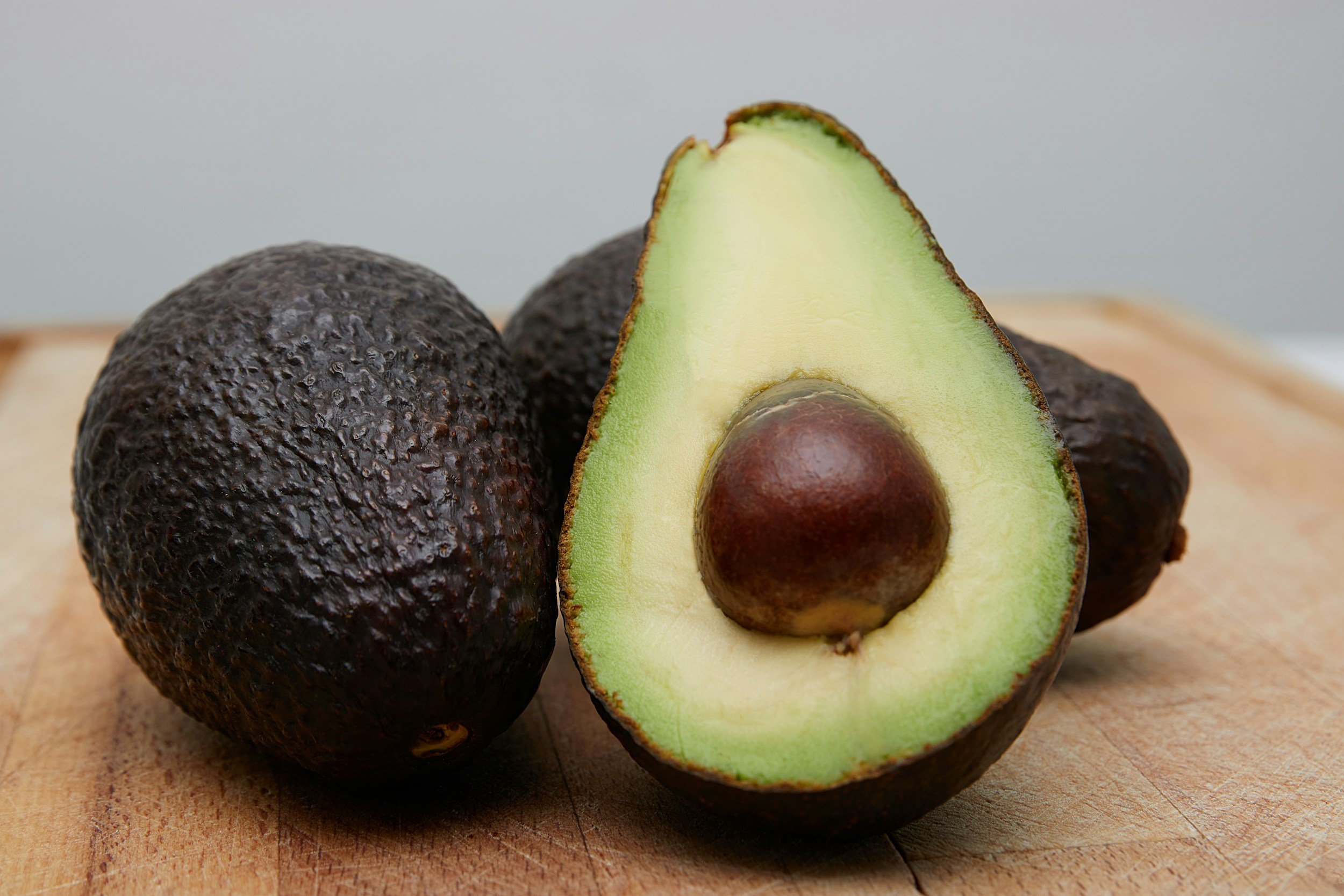
Avocado
Successfully growing avocados in the Bay Area is very possible, but it depends on several specific conditions that must be present in your garden. Many gardens in the Bay Area are too cold, too windy, lack the space needed, and/or have poorly draining soils. Accommodations can be made to correct many of these factors, including providing frost protection, choosing smaller growing varieties, and heavily amending our clay soils. Consideration and evaluation is a must—it will take 3-5 years, sometimes longer, from the time of planting before you will harvest your first fruit.
Growing Avocados
-
Sunlight:
Avocados need plenty of sun, choose a location that receives full sun exposure, 8 hours minimum.
Drainage:
Good drainage is crucial as avocado roots are susceptible to root rot in soggy soil. Amend heavy, clay soils with ample organic matter and pumice. Consider planting on a slight mound.
Wind Protection:
Avocados don't like strong winds, if possible, choose a sheltered location or provide a windbreak.
Sun Protection:
Avocados have thin bark that is susceptible to sunburn. A newly planted tree, or one that has been pruned severely, will need to have their trunks protected from the sun. This is done by either installing a coiled trunk protector or applying a coating of white latex. If you apply latex, thin it and apply lightly to allow air exchange.
Cold Protection:
Most Avocados do not like and will not tolerate frost.
Young Trees: Young avocado trees are particularly vulnerable to frost damage. Protect them during cold snaps by covering them with frost cloth, blankets, or even strings of incandescent Christmas or string lights. LED lights will not gennerate sufficient heat for protection.
Mature Trees: Mature, well-established avocado trees can tolerate lower temperatures, but it's still wise to provide some protection during severe freezes.
-
Both types will produce ample fruit on their own.
The idea behind planting both types gets its roots from commercial production practices where maximum crop size is needed for profitability.
Growing both types in a garden can increase fruit production due to cross-pollination, however, consideration must be made to the idea of having enough room in your garden for two trees… Trees may also produce at a younger age when both types are present.
Here's more detail for you:
Type A:
These trees open their flowers as female in the morning, meaning they are receptive to pollen during that time. The flower then closes and reopens as a male the afternoon.
Type B:
These trees open their flowers as female in the afternoon, making them receptive to pollen in the afternoon. The flower then closes and reopens as male the following morning.
Pollination:
Again, both types can produce fruit on their own, however, planting both Type A and Type B trees can lead to increased fruit production. When both types are present, the female and male flowers are available to the pollinators at the same time. This increases the chances of successful pollination, AKA, fruit set and production.
-
Watering requirements vary with time.
A newly planted avocado tree will do best when the soil moisture level is kept at the ideal level. This is defined as consistent periods of dry, followed by a watering just before the tree wilts.
This applies to both container grown and ground planted trees.
To achieve this:
Allow the soil to dry to a depth of 1-2 inches a container or 3 inches in the garden before watering again. It is best to wait another day if you have any concern about whether it is too wet.
Avoiding periods of dryness is as important as the avoidance of water logged soils; both are unhealthy and will delay establishment and fruit production.
It is hard to suggest a watering schedule, this since this is very dependent your soil type and the seasonal temperatures.
A very loose guideline may look like this:
Heavy or Clay Soils
You might water once a week when warmer, once every 10 days when cooler. Always check the moisture level of the soil before watering.
Lighter, Well Drained or Sandy Soils
You might water once every 7 days when cool, once every 4 days when warmer.
An established tree will do best with regular, though less frequent watering.
It is best to deep soak an established tree every 2-3 weeks rather than shallow, frequent, weekly watering common in most gardens.
If containerized, allow the soil of your established, 1+ year old tree to dry to 25% of the depth of the container.
-
Avocado trees primarily need extra nitrogen, especially during their early years. Young trees benefit from three fertilizer applications per year, once in spring, summer, and fall, while mature trees may only require fertilization in the fall or winter.
Fertilization Schedule:
Young Trees (non-producing): Apply fertilizer three times: once in spring, once in summer, and again in fall. The three applications help to provide the consistent source of nitrogen needed for this early growth stage.
Mature Trees: Typically will need fertilizer applied only in the fall or winter.
In both cases, choose a fertilizer such as Master Nursery’s ‘Citrus Food’ or EBStone Organics ‘Citrus and Fruit Tree Food’.
-
Common Pests: Be aware of potential pests like avocado brown mites, persea mites, and thrips.
Diseases: Root rot (Phytophthora) is a major concern for avocados, especially in poorly drained soil. Provide good drainage when planting to avoid the use of a fungicide drench later on.
~ THIS LIST MAY NOT ACCURATELY REPRESENT OUR CURRENT STOCK ~

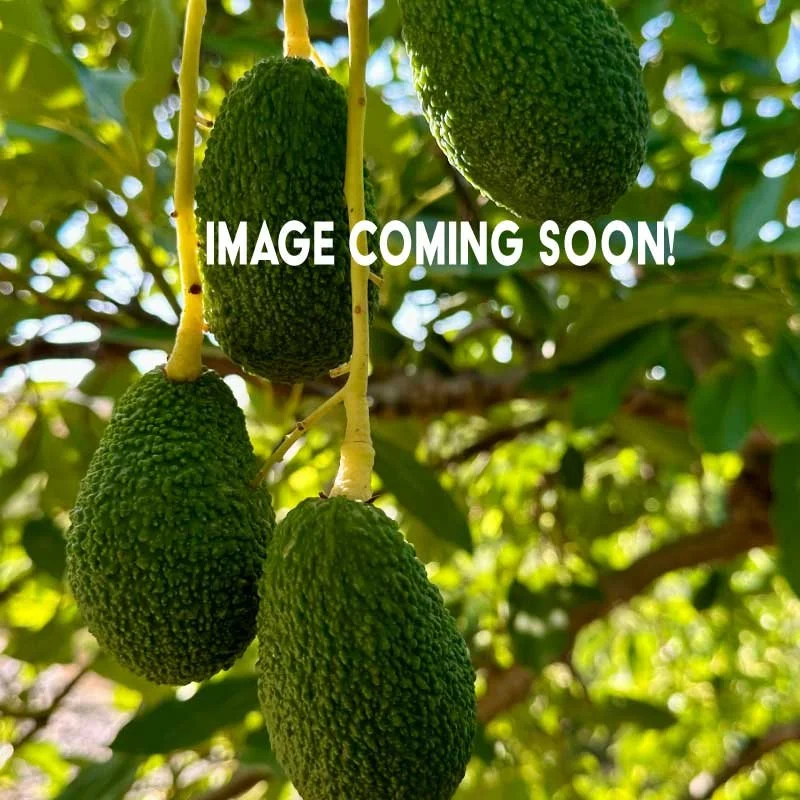
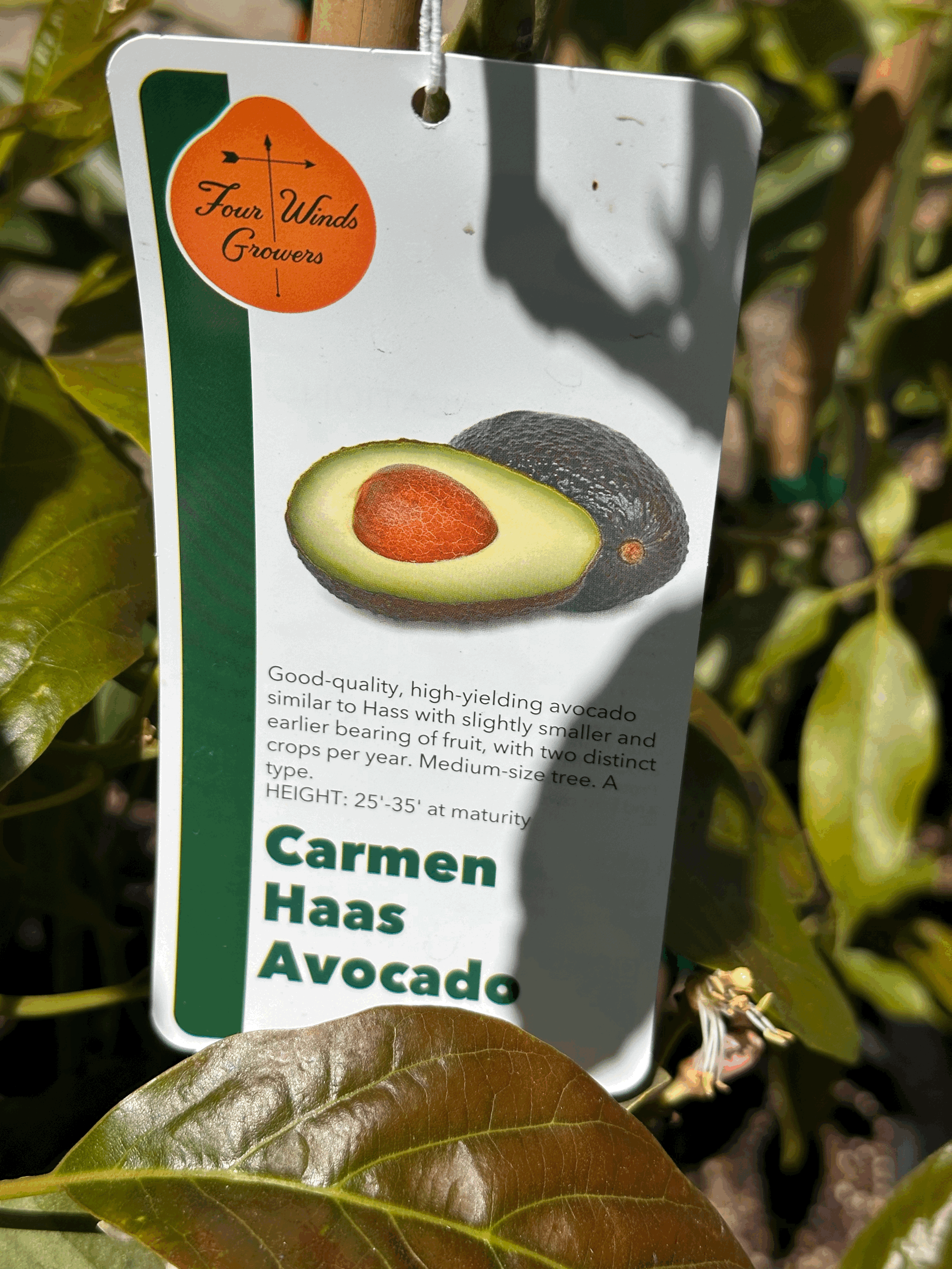
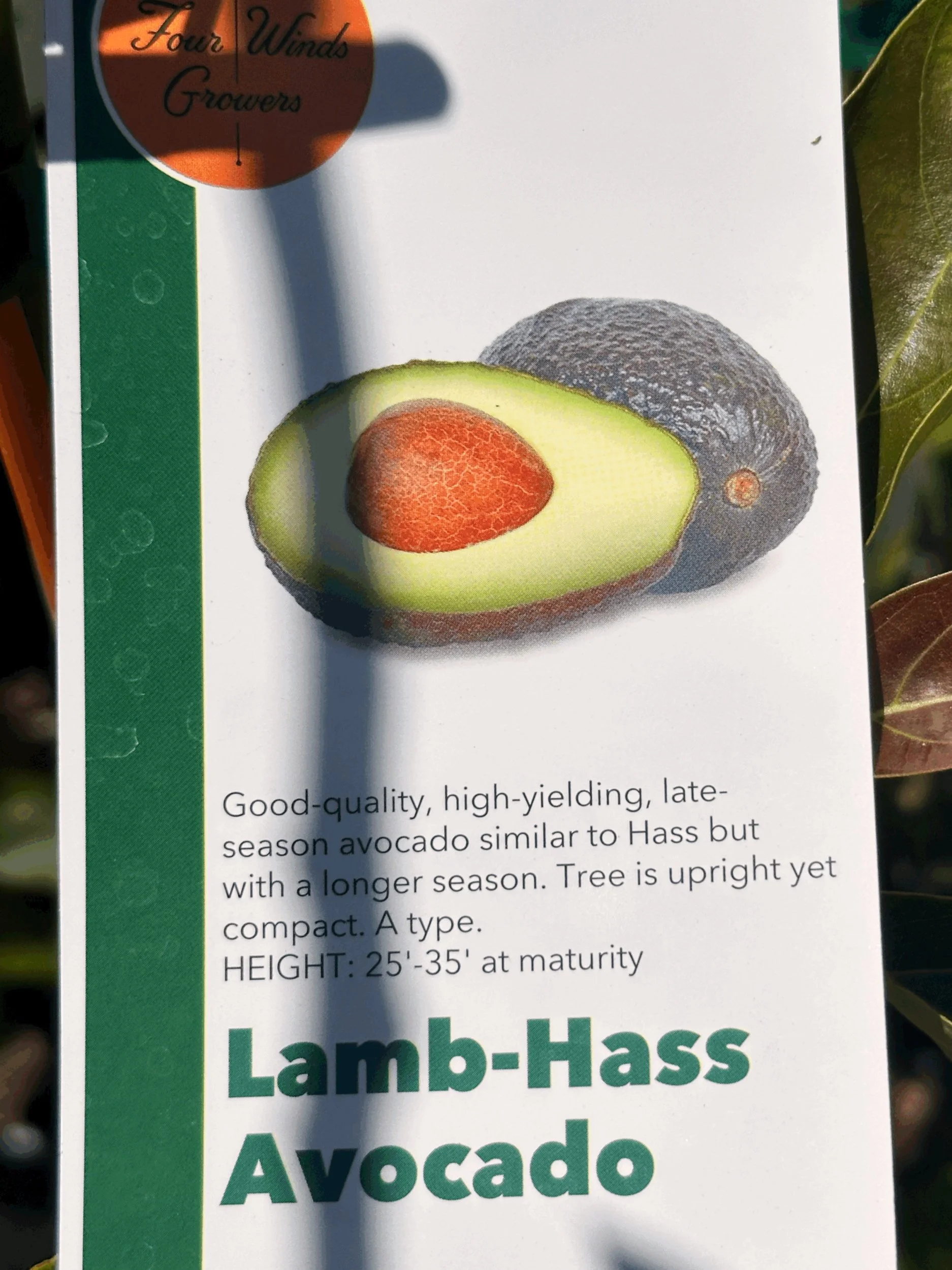
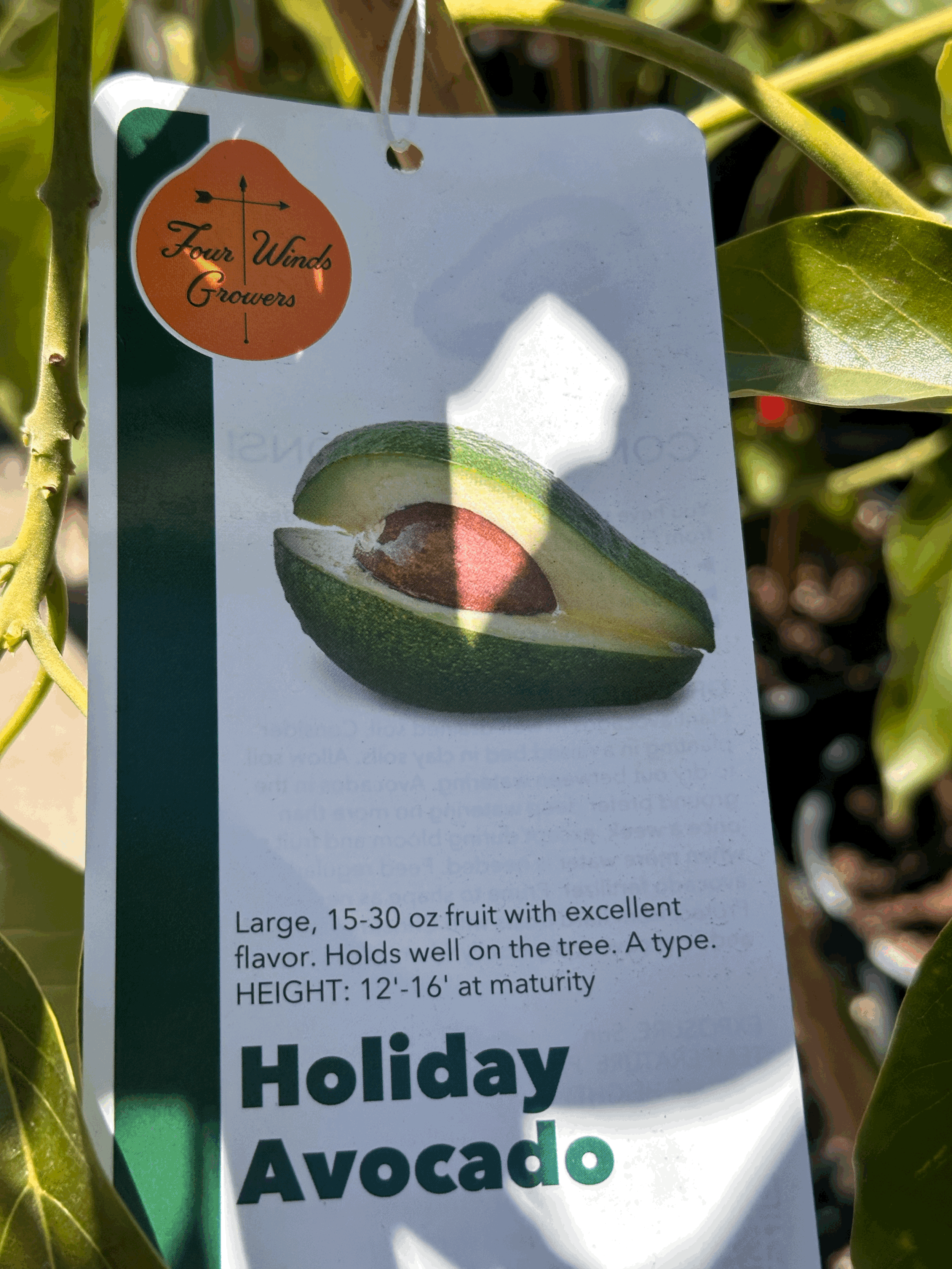
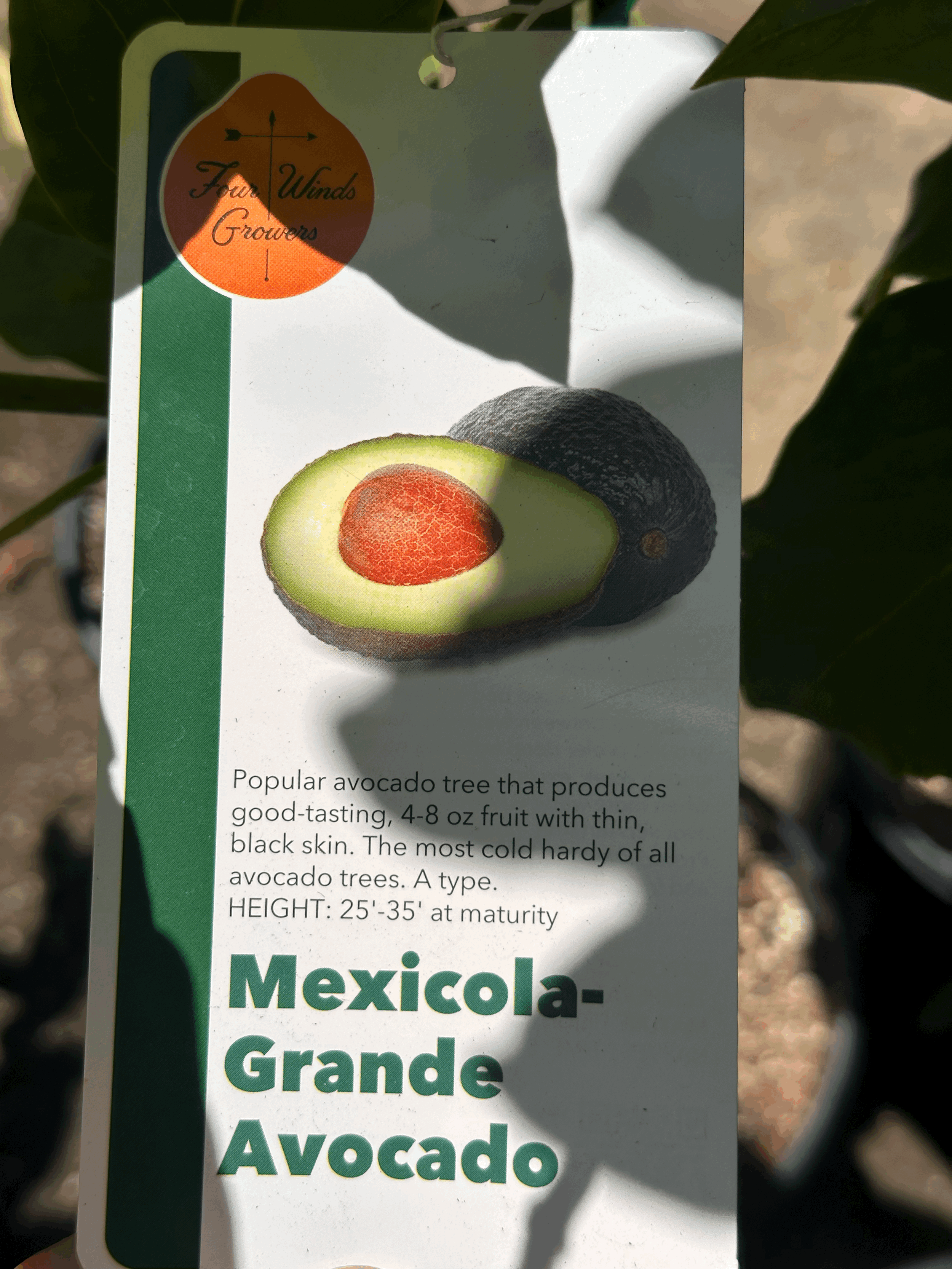


An evergreen tree; slow to moderate growth to 12-15 feet in height with a greater spread; can be kept smaller with pruning. Ideal for a small garden.
Produces, large sized, thick skinned, green fruit with flecks of gold and a creamy, nutty flavor. The fruit turns black as it ripens. The fruit are similar to Hass in many aspects, slightly rounder, larger, and are said to be preferred in flavor taste tests.
This compact tree bares heavily, in huge clusters, from April through September and less prone to alternate year bearing. More prolific producer than most larger varieties.
Considered truly self fertile though this Type A and Type B hybrid will produce better with any other variety planted nearby.